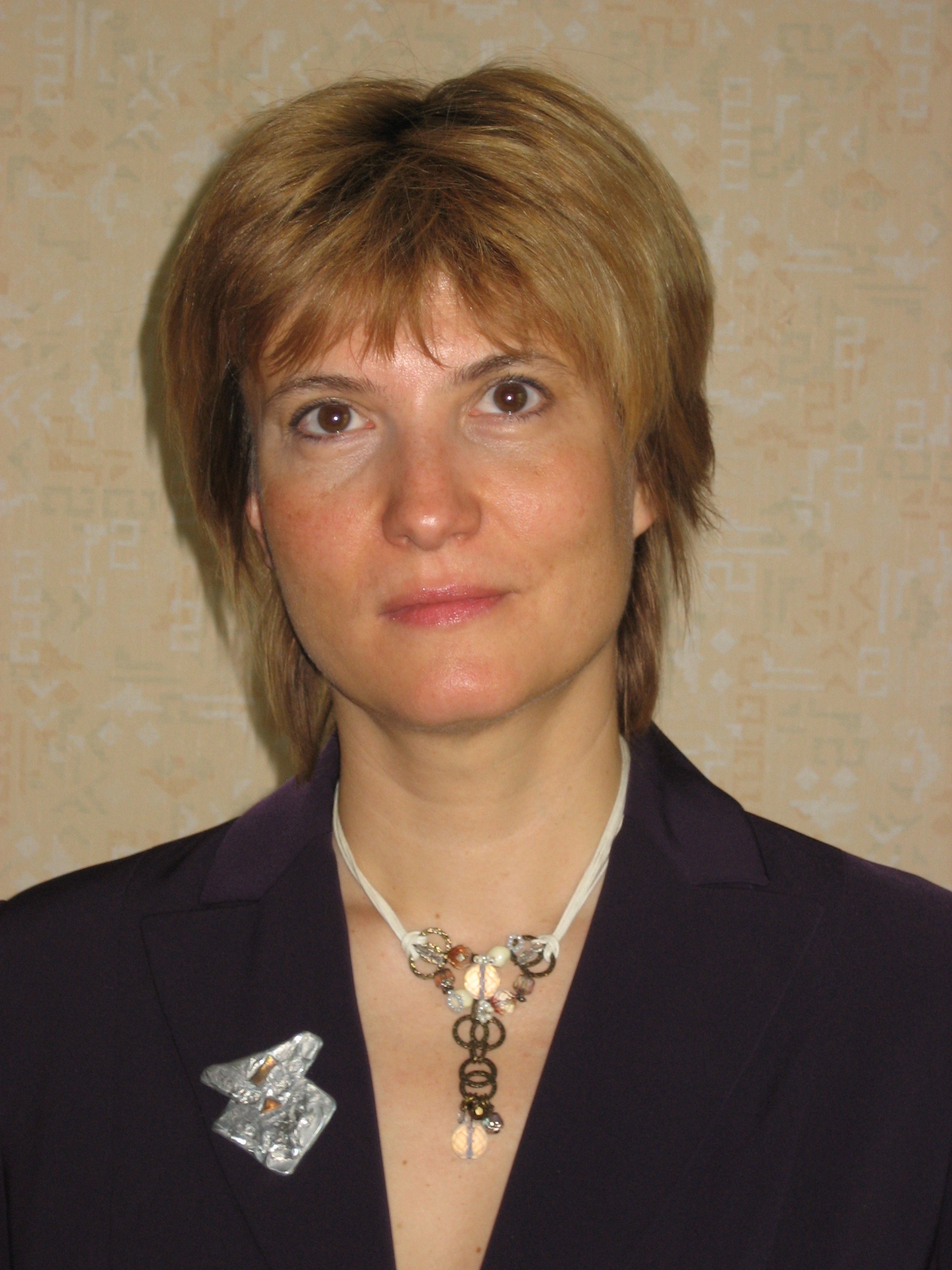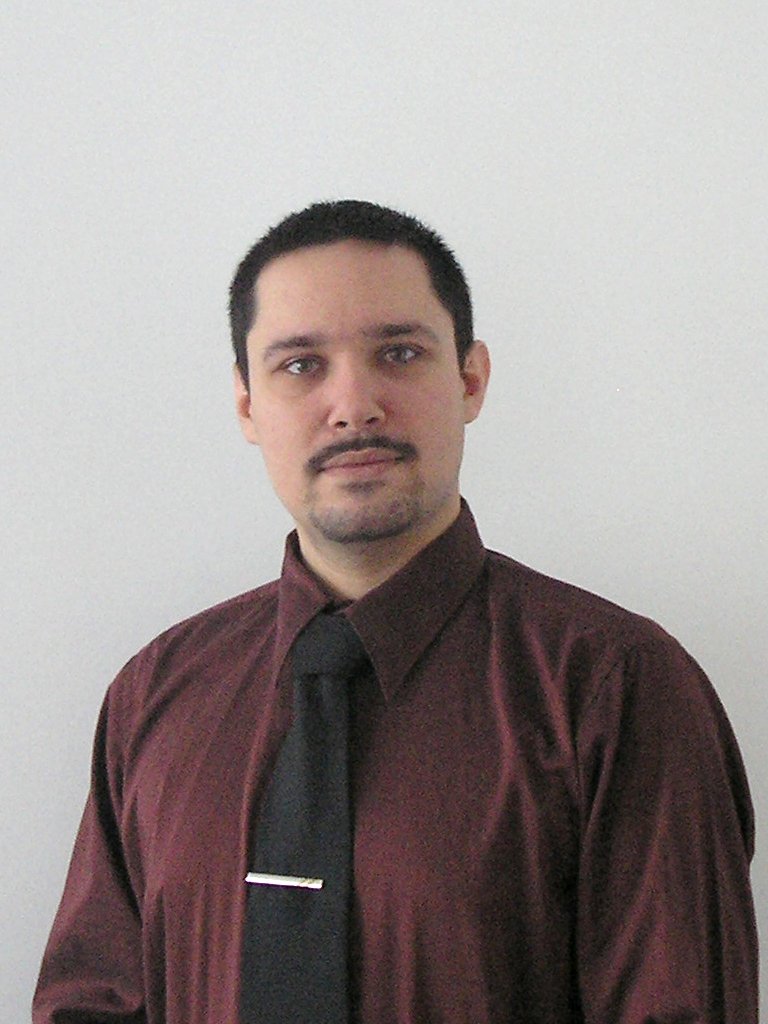

Athena Coustenis & Mathieu Hirtzig
Posted: Mar 23, 2022

Athena Coustenis
Director of Research at the Centre National de la Recherche Scientifique (CNRS), astrophysicist with the Laboratoire d’Etudes Spatiales et d’Instrumentation en Astrophysique (LESIA) of Paris-Meudon Observatory, France
Contact Information
LESIA (Bat. 18)
Observatoire de Meudon
5, place Jules Janssen
92195 Meudon Cedex
France
Tel : +3314507720
Fax : + 33145077426
Athena.coustenis@obspm.fr
Birth: September 1961, Athens, Greece, French citizenship.
Education:
1986: Master in Astrophysics and Space techniques, Univ. Paris 6 (P. & M. Curie 7)
1987: Master in English Literature, Univ. Paris 3 (Nouvelle Sorbonne)
1989: PhD in Astrophysics and Space techniques, Univ. Paris 7 (P. & M. Curie 7)
1996: Habilitation à Diriger les Recherches (HDR), Univ. Paris 6 (P. & M. Curie 7).
Professional History :
2008-present: Director of research, CNRS, at LESIA, Paris-Meudon Observatory
1991-2008: Chargée de recherche (Senior researcher) at DESPA, then at LESIA, Paris-Meudon Observatory
Area of Expertise:
Athena Coustenis works in the field of Planetology. Her research is devoted to the investigation of planetary atmospheres and surfaces, with emphasis on Titan, Saturn’s largest satellite. She has also contributed to an effort to uncover the nature of the atmosphere surrounding the newly-found extrasolar planets. She has led many observational campaigns from the ground using large telescopes (CFHT, UKIRT, VLT, etc) and has used the Infrared Space Observatory (ISO) to conduct planetary investigations. She is Co-Investigator of three of the instruments (CIRS, HASI, DISR) aboard the Cassini/Huygens space mission to Saturn and Titan. The success of the mission has led her to devote most of her time to the analysis and interpretation of the data recovered, using her own radiative transfer codes and other analysis tools. In 2007 she led a proposal in response to ESA’s Cosmic Vision Call for a new mission (TandEM) to return to Titan and Enceladus and co-leads a proposal for a Saturn mission (KRONOS). TandEM was selected by ESA for further studies and is now, combined with the 2007 Flagship mission, composing the Titan/Saturn System Mission (TSSM) studied jointly by ESA and NASA, for which she is the Lead European Scientist. She is also involved in the Jupiter-Europa mission (EJSM).
Honours:
The NASA Group Achievement Award for the Cassini Programme Huygens Atmospheric Structure Instrument (HASI)
The NASA Group Achievement Award for the Cassini Program Descent Imager Radiometer Spectrometer (DISR)
The NASA Public Service Group Achievement Award for the Huygens Atmospheric Structure Instrument (HASI)
The NASA Public Service Group Achievement Award for the Descent Imager Spectrometer radiometer (DISR)
The ESA Award for making an outstanding contribution to the Huygens Probe.
Research management and outreach
Member-at-large of the Observing Program Committee for the selection of proposals for the ESO/Very Large Telescope (2001-2003) and chair of Panel C ("Stars, planets and ISM").
President of the International Commission for Planetary Atmospheres and Environment (ICPAE) since 2003.
Member of the Committee of the Division of Planetary Sciences (DPS)
Officer of the European Geophysical Union (EGU).
Organiser/convener of Planetary sessions in the International colloquia of EGU (since 2000), IAMAS (since 2003), AOGS (since 2004), DPS (since 2006), EPSC (since 2006), Goldschmidt Conference (since 2007) and IPPW (since 2006).
Courses in Time allocation proposals at the big telescopes (Master), since 2001.
Head Guest Editor for special issues of Planetary and Space Sciences since 2003.
Member of the Editorial Board of Astronomy & Astrophys. Reviews
ESA and NASA consultant
Consultant with the French Ministry of Education (MJENR).
Member of the Council of LESIA.
She has written several articles for the public, participated in the juries many public astronomy contests, made several TV appearances in connection to Titan, Cassini and the extrasolar planets. She has delivered many public lectures on planetology and participated in television documentaries. She is actively involved in the preparation of the IYA09.
Some significant publications :
Over 100 refereed publications of which :
Coustenis, A., Bézard, B. 1995. Titan's Atmosphere from Voyager Infrared Observations: IV. Latitudinal Variations in Temperature and Composition. Icarus 115, 126-140.
Coustenis, A., Salama, A. , Lellouch, E., et al., 1998. Evidence for water vapor in Titan’s atmosphere from ISO/SWS data. Astron. Astrophys. 336, L85-L89.
Coustenis, A., Gendron, E., Lai, O., et al., 2001. Images of Titan at 1.3 and 1.6 microns with adaptive optics at the CFHT. Icarus 154, 501-515.
Coustenis, A., Salama, A., Schulz, B., et al., 2003. Titan’s atmosphere from ISO mid-infrared spectroscopy. Icarus, 161, 383-403.
Moutou, C., Coustenis, A., Schneider, J., Queloz, D., Mayor, M., 2003. Search for the HeI absorption feature in the transmission spectrum of HD209458. Astron. Astroph. 405, 341-348.
Coustenis, A., Hirtzig, M., Gendron, E., et al., 2005. Maps of Titan’s surface from 1 to 2.5 micron. Icarus 177, 89-105.
Coustenis, A., Negrao, A., Salama, A., et al., 2006. Titan’s 3-micron spectral region from ISO high-resolution spectroscopy. Icarus 180, 176-185.
Negrao, A., Coustenis, A., Lellouch, E., et al., 2006. Titan’s surface albedo from near-infrared CFHT/FTS spectra: modeling dependence on the methane absorption. Plan. Space Sci. 54, 1225-1246.
Coustenis, A., Achterberg, R., Conrath, B., et al., 2007. The composition of Titan’s stratosphere from Cassini/CIRS mid-infrared spectra. Icarus 189, 35-62.
Coustenis, A., 2007. Titan. In the Encyclopedia of the Solar System, Second Edition, P. R. Weissman, L.-A. McFadden, T.V. Johnson, Eds., Academic Press.
Coustenis, A., Taylor, F.W., 2008. Titan : Exploring an Earth-like World. World Scientific Press, Singapore.
Lavvas, P. P., Coustenis, A., Vardavas, I. M., 2008. Coupling photochemistry with haze formation in Titan's atmosphere. Part II: Results and Validation with Cassini/Huygens data. Plan. Space Sci. 56, 67-99.
Coustenis, A., Atreya, S., Balint, T., and 142 co-authors, 2008. TandEM: Titan and Enceladus mission. Experimental Astronomy, DOI: 10.1007/s10686-008-9103-z.
Coustenis, A., Jennings, D., Jolly, A., et al., 2008. Detection of C2 HD and the D/H ratio on Titan. Icarus 197, 539-548, 10.1016/j.icarus.2008.06.003.
Lebreton, J-P., Coustenis, A., Lunine, J., Raulin, F., Owen, T., Strobel, D., 2008. Results from the Huygens probe on Titan. Astron. & Astrophys. Rev., in press.

Mathieu HIRTZIG
Research Engineer at the Centre National de la Recherche Scientifique (CNRS), astrophysicist with the Laboratoire d’Etudes Spatiales et d’Instrumentation en Astrophysique (LESIA) of Paris-Meudon Observatory, France
LESIA (Bat. 18)
Observatoire de Meudon
5, place Jules Janssen
92195 Meudon Cedex
France
Tel : +3314507716
Fax : + 33145077426
Mathieu.hirtzig@obspm.fr
Date of birth: June 1978
Education
2002: Master in Fundamental Physics, Univ. Paris 11 (Orsay)
2005: PhD in Astrophysics and Associated Methods, Univ. Paris 11 (Orsay)
Professional History:
2008-present: Research Engineer, CNRS, at IPSL and Paris-Meudon Observatory
2007-2008: Research Associate at AOSS, Univ. Michigan
2005-2007: Post-doctorate at LPG (Nantes) with a Centre National d’Etudes Spatiales (CNES) scholarship
Significant Honors:
CNES award for best outreach presentation at the JC2 “young scientists” colloquium.
Area of expertise:
Mathieu Hirtzig works in Planetary Sciences, with a specialization on Titan – Saturn’s largest satellite –studying both the surface and the atmosphere of the satellite. In the context of comparative planetology, he has also contributed to atmospheric studies of Neptune, Uranus, and Venus. He has participated and/or led several observational campaigns from the ground using large telescopes fitted with adaptive optics systems (CFHT, VLT, WHT, etc) to conduct Titan investigations. He also took part in the processing and interpretation of some Cassini-Huygens observations: VIMS, DISR, CIRS…He is involved in the TandEM proposal to return to Titan and Enceladus: this new mission, studied jointly by ESA and NASA and renamed Titan/Saturn System Mission, will include an orbiter, a montgolfiere balloon, and several landers, to be launched in the decade to come.
Some relevant publications:
53 communications and 16 publications to date (11 refereed and 6 as first author) amongst which:
Gendron, E., Coustenis, A., Drossart, P., Combes, M., Hirtzig, M., et al. 2003. VLT/NACO adaptive optics imaging of Titan. Astron. Astroph. Vol. 417 No. 1 (April I 2004), p. L21-L24.
Hirtzig, M.; Coustenis, A.; Lai, O., et al. 2005. Near-infrared (0.85-1 micron) study of Titan's resolved disk in spectro-imaging with CFHT/OASIS and the adaptive optics system PUEO. Plan. Space Sci. 53, 535-556.
Coustenis, A.; Hirtzig, M., Gendron, E., et al. 2005. Maps of Titan's surface from 1 to 2.5 µm. Icarus, 177, 89-105.
Hirtzig, M., Coustenis, A., Gendron, E., et al. 2006. Monitoring atmospheric phenomena on Titan. Astron. Astroph., 456, 761-774.
Hirtzig, M., Coustenis, A., Gendron, E., et al. 2007. Titan : atmospheric and surface features as observed with NAOS/CONICA at the time of the Huygens’ mission. JGR-Planets, 112, E02S91.
Negrão, A., Hirtzig, M., Coustenis, A., et al. 2007. 2-µm spectroscopy of Huygens probe landing site on Titan with VLT/NACO. JGR-Planets, 112.
Witasse, O., Lebreton, J.-P., Bird, M. K., Dutta-Roy, R., Folkner, W. M., Preston, R. A., Asmar, S. W., Gurvits, L. I., Pogrebenko, S. V., Avruch, I. M., Campbell, R. M., Bignall, H. E., Garret, M. A., van Langevelde, H. J, Parsley, S. M., Reynolds, C., Szomoru, A., Reynolds, J. E., Phillips, C. J., Sault, R. J., Tzioumis, A. K., Ghigo, F., Langston, G., Brisken, W., Romney, J. D., Mujunen, A., Ritakari, J., Tingay, S. J., Dodson, R. G., Van’t Klooster, C. G. M., Blancquaert, T., Coustenis, A., Gendron, E., Sicardy, B., Hirtzig, M., et al. 2007. Overview of the coordinated ground-based observations of Titan during the Huygens mission. Journal of Geophysical Research (Planets) 111, 7.
Coustenis, A., Atreya, S., Balint, T., Brown, R. H., Dougherty, M., Ferri, F., Fulchignoni, M., Gautier, D., Gowen, R., Griffith, C., Gurvits, L., Jaumann, R., Langevin, Y., Leese, M., Lunine, J., McKay, C. P., Moussas, X., Müller-Wodarg, I., Neubauer, F., Owen, T., Raulin, F., Sittler, E., Sohl, F., Sotin, C., Tobie, G., Tokano, T., Turtle, E., Wahlund, J.-E., Waite, H., Baines, K., Blamont, J., Dandouras, I., Krimigis, T., Lellouch, E., Lorenz, R., Morse, A., Porco, C., Hirtzig , M., et al. 2008. TandEM: Titan and Enceladus mission. Astrophysical Instruments and Method.
S Rodriguez, S Le Mouélic, P Rannou, G Tobie, K H. Baines, J W. Barnes, C A. Griffith, M Hirtzig, et al. 2009. Cloud activity on Titan: Seasonal changes and tidal effects. Nature, in press.
M Hirtzig, S Rodriguez, S Le Mouélic, C Sotin 2009. A review of Titan’s atmospheric phenomena. Astronomy & Astrophysics Reviews, in press.
附件下载:
It accepts original submissions from all over the world and is internationally published and distributed by IOP